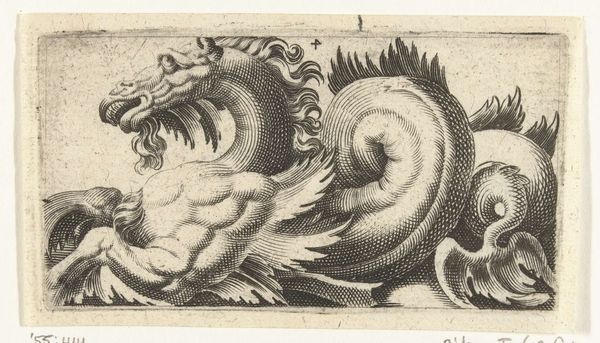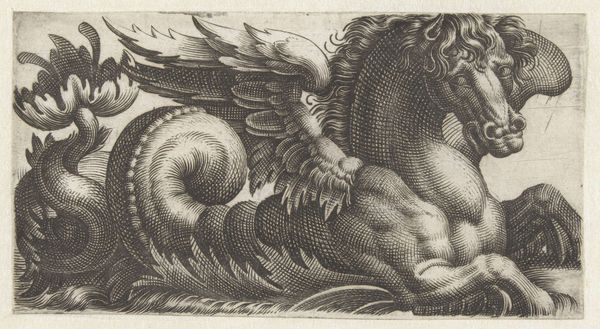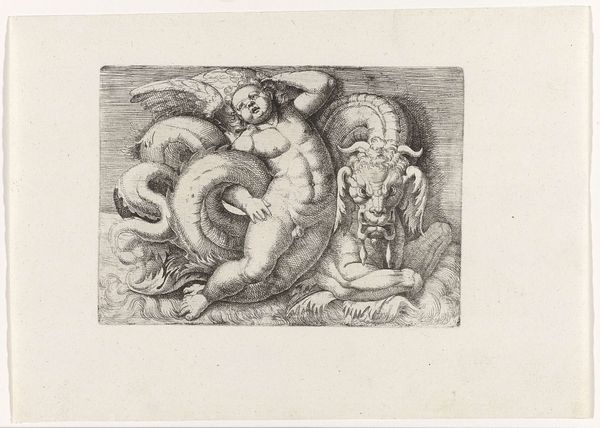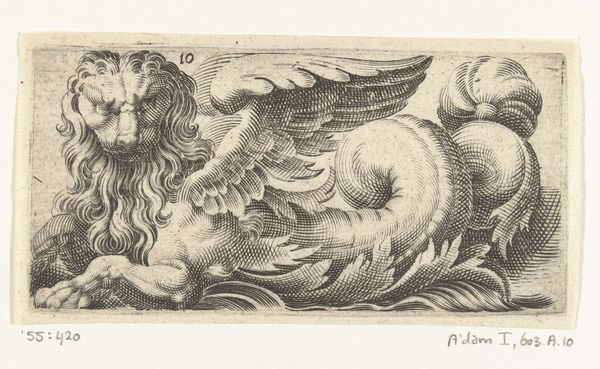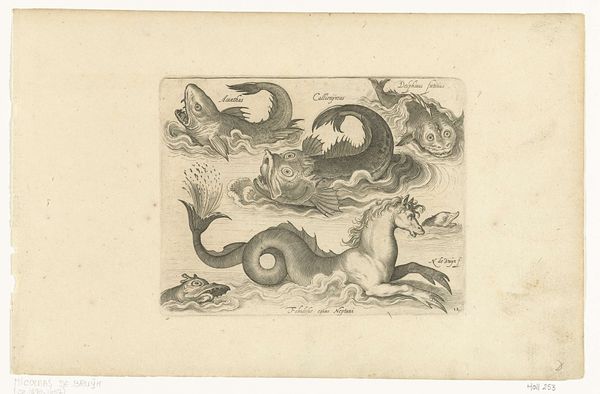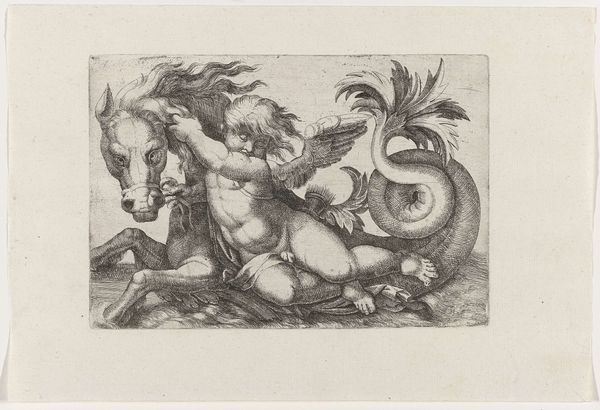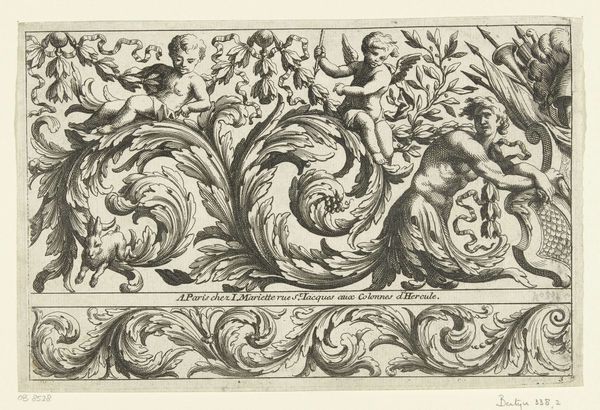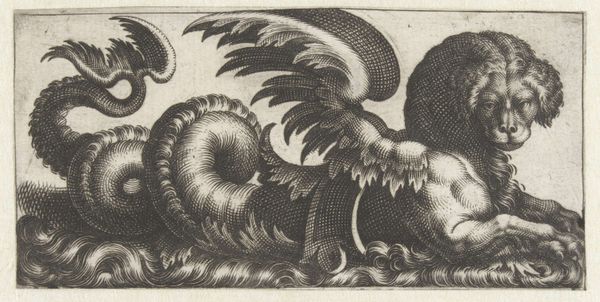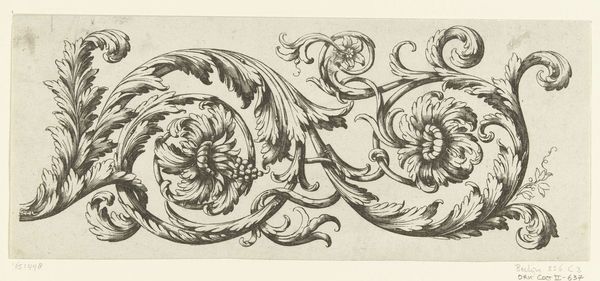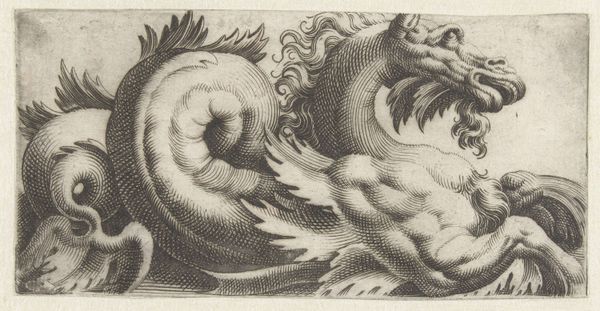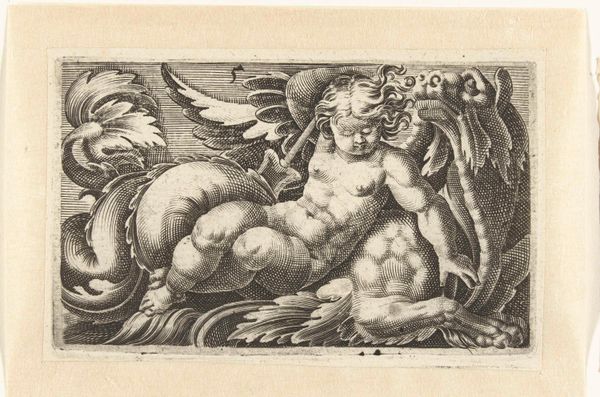
print, engraving
# print
#
mannerism
#
figuration
#
form
#
11_renaissance
#
line
#
engraving
Dimensions: height 100 mm, width 195 mm
Copyright: Rijks Museum: Open Domain
Giovanni Andrea Maglioli created this etching of two sea monsters, but we are uncertain of when exactly it was made. The image reflects a fascination with the natural world and also with the power of imagination to transform it. Looking back at the cultural references that might have informed Maglioli’s design, we can note that the sea monster or hippocampus, as it was known in antiquity, was a popular motif in ancient Greek and Roman art. These creatures often decorated temples, coins, and mosaics. During the Renaissance, there was a renewed interest in classical art and learning, which led artists to revisit this image as a symbol of power and mystery. The precise lines of the etching technique would have been suited to the didactic function of Renaissance art, which sought to classify and explain the natural world. To understand Maglioli's work more fully, scholars might consult emblem books, scientific treatises, and decorative pattern books from the period. These sources provide valuable insights into the cultural meanings and artistic conventions of the time.
Comments
No comments
Be the first to comment and join the conversation on the ultimate creative platform.

